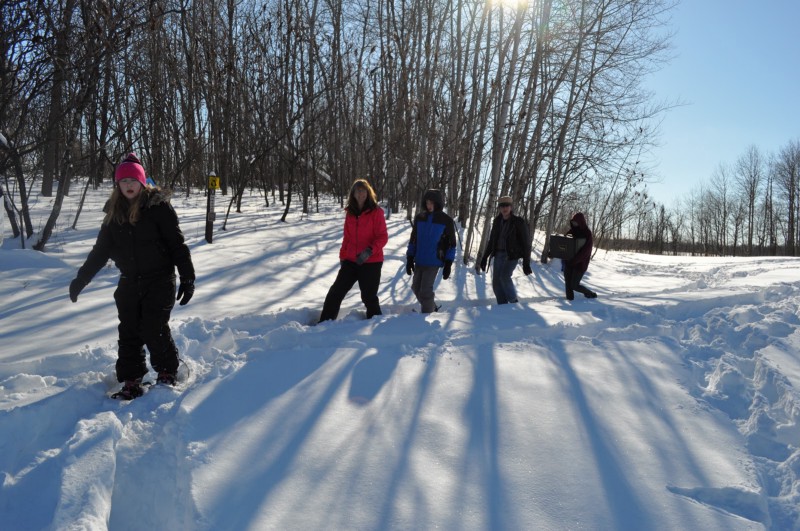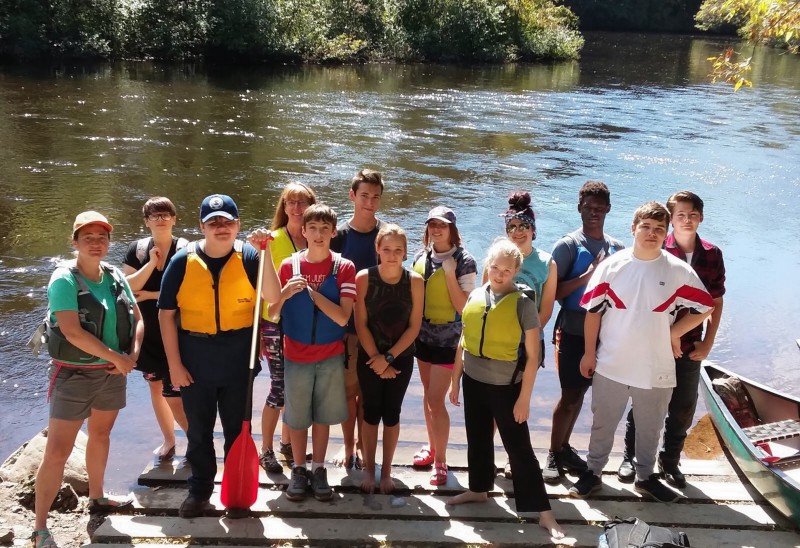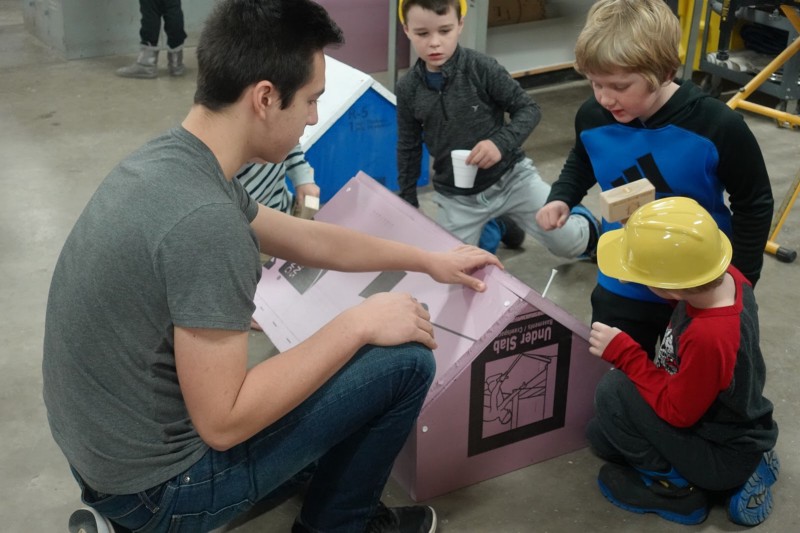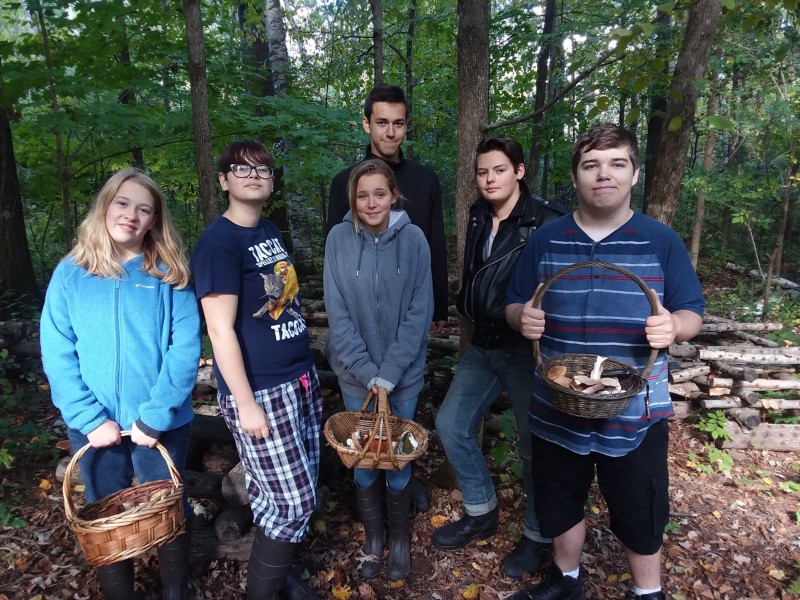Jenny Landes rises above and beyond traditional education as an advisor at Birchwood Blue Hills Charter School (BBHCS). As part of the greater Birchwood School District since 2009, BBHCS was designed as a project based alternative for students in grades 7–12th. With an experimental program existing next to a traditional schooling model, Birchwood provides many options to fulfill their mission in creating “a learning community of students ready to contribute to a global society.”
In speaking with HEADRUSH, Jenny discusses how project-based learning feels like “education set free” with “real world connections, student-led learning and individualization.” While tapping into their interests and curiosity and also attending seminars that assist student proposed project ideas, the students of BBHCS have a chance to “innovate, create and collaborate.”
BBHCS provides students with a low teacher to student ratio (1:15), hands-on learning experiences and student created Personal Learning Plans (PLP’s) which distinguishes them from their district neighbors. In breaking down the boundary between traditional and progressive education, Birchwood Blue Hills Charter School students are also able to take classes at Birchwood School and participate in sports and clubs. All projects and learning experiences are aligned with the Wisconsin Model Academic and National Common Core Standards as well as the skills and habits of mind introduced in the Framework for 21st Century Learning.
Here Jenny tells HEADRUSH about her experiences advising a student-led environment at BBHCS.

What is one thing that the world should know about Birchwood Blue Hills Charter School?
What popped into my mind is the idea of “education set free.” Primarily, student interest drives their learning and they take a major role in figuring out what that learning is going to look like.”
I read about how the PLP’s are also student-run. Tell me a bit more about PLP’s at your school.
Yes. Students create a Google site that is private to them. They are in charge of inputting main learning components and kind of map their own testing on there. The students present this information along with a running resume of sorts and some of the projects they are proud of. So it is totally their baby as far as what they are going to document. We also hold Groupthink sessions instead of parent-teacher conferences. These are student-led conferences that are held three-times a year where students present their PLP’s.
I’ve never heard of Group Think before — tell me more about this student-initiative.
So this is our 10th year of holding Groupthinks, where the students run the whole conference. As an advisor, the hardest thing for me is to sit there and not say anything. But that’s exactly what I really try and do in order for student voice to be central.

And parents are invited?
Yep. Parents attend. And the student runs it in conjunction with myself. We discuss where the students are at in their work and what they need to do to progress…They have some reports that they show through HEADRUSH; That is an integral part of the conference because parents look through the credit section which is the most valuable part for the conference. It is even more valuable than reports, because parents look over reports quickly, but they don’t otherwise get a chance to truly understand where students are in their learning. The HEADRUSH credit section allows for that.
That is great that HEADRUSH provides a more tangible way to see and understand student development.
That’s right. Then the conference turns into a valuable back and forth exchange. It allows students to brag a bit when they are doing well and are ahead in their credits. And it is obvious when students still need more credits in a particular area. It helps us plan ahead together.
Do you de-school students as well as parents to understand the breakdown of this unique, project-based model?
I think the first Groupthink parents attend serves as the biggest eye opener and provides the most information. Even before a student comes to school here, the parents are required to come and observe. They ask questions, meet with the principal and myself, and then they talk to students. Then I have a little scavenger hunt where parents go ahead and ask any student a question about the school. They can even pick a question I provide and just walk up to anybody and ask them.
Have you faced any resistance from the community in terms of your style of learning?
I think the main thing is we’re a very small school district. We have a little over three hundred students in our district, pre-K through 12th. And within that we offer traditional school, our PBL charter, a Montessori pre-K — 6, and even our K-12 Bobcat Virtual Academy. So, for our small district, we can’t exist without each other. We have so many options even though we’re small.

And do you find that the traditional school still a more popular option?
Yes, definitely. And there was talk when we first started to bring PBL to the whole school, but the teaching staff we had at the time and even now I’d say are ingrained in their lesson plans and textbooks. I don’t see it happening in the foreseeable future but we do fill an important gap for high, middle and low performing students. When we first started we mainly had kids that were gifted and talented who were ready to go beyond. And they were bored in the traditional environment. They were thinking, Why do I have to read this chapter? I already get it. I know. Give me the test. I’ll ace it. But now, we’ve evolved to include some special ed students that are in need of more time or a different approach to learning in order to understand or enjoy it.
These days education can be divisive or competitive between traditional and alternative education options. How do you respond to that?
We have students in our project-based model who are still allowed to supplement their project work or their interests at our traditional school, which helps. Because we are small, mainly what I see happening is a lot of kids here, if they have any musical interests, they can join band or choir at our traditional school. I think this is ultimately a good thing, but difficult logistically when we are trying to plan activities outside of our building.
What do you think are the important qualities of a PBL educator?
I think it is probably the same thing that I tell the kids that makes for good learning — curiosity and good questioning techniques. Todd Brunclik and I actually started this school as an art teacher and music teacher. Other teachers initially thought, How are you two going to teach projects in English, Math, Science, Social Studies, etc.? But we knew we could ask students the right questions and help them logically figure out how to learn important skills themselves. And in today’s world, we have resources online and in books, and can easily use experts. It’s a different world now.
Tell me how the HEADRUSH team has supported your innovative education.
The team’s willingness to video conference with educators and students makes a big impact. All the students have been contributing input and have felt really good about the transition from our last management system. The team has helped them organize their projects within the modules and connect their learning targets. Mike helped me input and organize a billion learning targets which was huge for me because I hadn’t really gone through each individual state and Common Core standard for years. Now the students are actually clicking on targets that align with their interests and getting project idea sparks from the standards. I think it’s such a game changer when the students understand how the standards actually apply and are relevant to their learning and project work. It is an “Aha” moment for students and educators.

Any advice for schools hoping to implement student-led learning?
We use an advisory circle model where we schedule daily time to talk and I think that’s such a valuable part of our school. We use that time for team building and have included various activities, such as team building, mindfulness, even Qigong. Just having that time provides a real family atmosphere. That 1:15 ratio helps care for students and connect with them for 45 minutes every day. So carve out that time. If you don’t carve it out it, it won’t happen. I just love how organic our small community is. It makes learning a lot of fun and crazy.